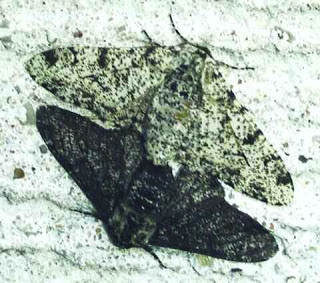What is Industrial Melanism | Important FAQs
What is Industrial Melanism?
- Industrial melanism is a phenomenon that leads to the evolution of darker body color in members of a species living in polluted environments.
- Industrial melanism is a phenomenon that occurs when individuals within a species with darker feathers, fur, or skin are more common in the population because they have an advantage given the soot and pollution in the industrialized area.
- If contamination persists for several generations, individuals with a darker coloration can be selected and individuals with lighter coloration can be selected. The lighter persons have a disadvantage in the polluted environment.
- A great example of industrial melanism is the dark-colored melanic moth species that evolved from a paler type in England. British naturalist Kettlewell studied the phenomenon in detail in locations such as Birmingham and Dorset. Kettlewell in the 1950s and later Michael Majerus in the 21st century, identified the phenomenon of industrial melanism as a process of natural selection.
- The population of Biston betularia in England before the industrial revolution consisted mainly of white forms; dark melanic forms were rare mutant forms.
- White forms were well camouflaged, while the dark ones became easy prey for birds, as seen prominently on moss-covered tree trunks. No reference to the black melanic form has been found before 1800.
- As industries flourished in England, melanic forms emerged, especially in Manchester. At the turn of the century, only melanic forms remained in that industrial city. Some authors acknowledge the newly established urban moth population as Biston carbonara.
- In the polluted environments, the lichen quickly disappeared and tree trunks with soot left. Melanic forms have now gained the advantage of being matched with the environment, while white forms have been readily eaten by birds.
Boston Betularia Butterfly and Industrial Revolution
The butterfly Biston betularia is very common in England and Scotland where it is found in two variants that differ in their color. One is light in color and has dark spots on its wings, while the other is black. Before the Industrial Revolution, light-colored butterflies were more numerous, while black ones were few. But after the Industrial Revolution, things changed radically: gradually black butterflies began to prevail so that in the early 20th century they were almost the only butterfly variant in many industrial areas (such as Manchester). This phenomenon was associated with industrial pollution, was called industrial melanism, and has since been observed in dozens of species of insects living in industrial areas.
The explanation of the phenomenon lies in the action of natural selection. Before the Industrial Revolution, tree trunks had their natural light color. The light-colored butterflies resting on them (because this butterfly feeds at night and rests during the day) were more difficult to distinguish from their predators, the insectivorous birds, than the black ones.
For this reason, they prevailed in the local populations of the butterfly, as they had a better chance of survival – and transmission of their characteristic (light color of the wings) to the next generations – than blacks. Natural selection is the process of species evolution through which organisms that are better adapted to the environment leave more offspring than those that are less adapted. The theory of natural selection was formally formulated in 1858 by Charles Darwin. It is based on the observation that certain differences between individuals in a population are inheritable.
FAQs About Industrial Melanism
1. What are industrial melancholy and an example?
Answer: Industrial melanism is a process observed in many species of urban Lepidoptera where the wings take on a darker hue.
2. Which organization experienced industrial melanism?
Answer: Industrial moth blight was early evidence of Charles Darwin’s natural choice in action and is a classic example of teaching evolution. Sewall Wright described it as “the clearest case in which a visible evolutionary process has been observed”.
3. What is industrial melancholy, and why is it
Answer: Industrial melanism is the proportionate increase in melanin pigments in members of a population, either as a result of an increase in the frequency of different ink forms or as a consequence of general darkness of some or all forms within a population where it increases.
4. How is industrial melanism an example of natural selection?
Answer: The classic example of natural selection is provided by the response of a Biston betularia moth, which is found in all parts of England. Industrial melanism is an adaptation where moths living in industrial areas developed melanin pigment to hide from their predators.
5. When did industrial melanism begin?
Answer: Industrial melanism was first observed in 1900 by geneticist William Bateson. observed that color forms were inherited, but did not explain polymorphism.
6. What are the forms of Biston betularia?
Answer: Birch butterfly or spotted moth (Biston betularia) In its typical form, the birch butterfly has a camouflage pattern that resembles pepper and salt splashes. In some areas, it has a black soot or “black” form known as “carbon”.
7. What happened to the Boston Betularia butterfly?
Answer: White feathers, turned black to match the plants with soot soaked. Scientists find the key gene in mutation. The Story of the birch butterfly (Biston betularia) is a book about how evolution works by natural selection.

